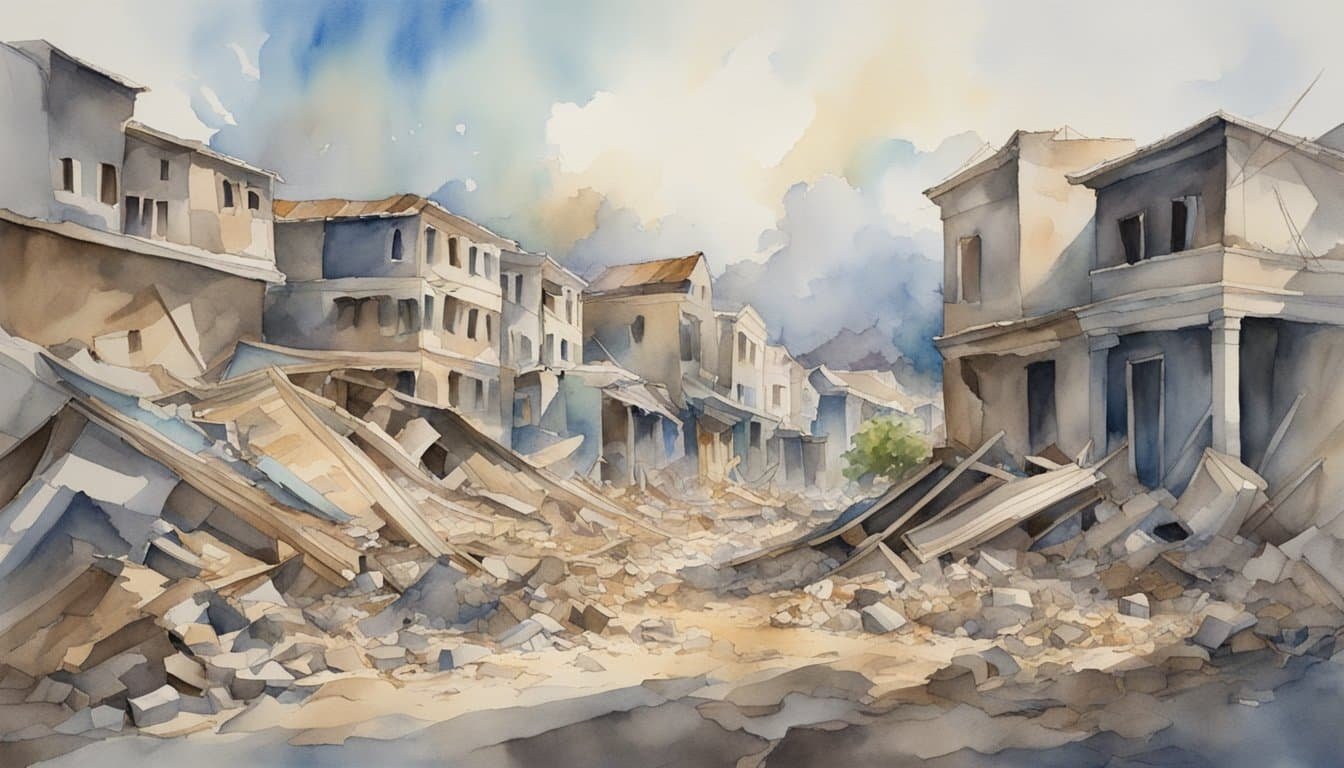Overview of Haiti Earthquake
On January 12, 2010, Haiti was struck by a catastrophic earthquake that devastated the nation, particularly affecting the capital, Port-au-Prince, and towns like Les Cayes. This tragic event not only reshaped the physical landscape but also left an indelible mark on the country’s history.
Initial Impact
The earthquake struck with a suddenness that left residents and the country’s civil protection authorities in shock. In mere moments, buildings crumbled into rubble, roads split, and infrastructure was severely damaged. The capital city, Port-au-Prince, bore the brunt of the devastation, with essential services and government buildings including the Presidential Palace collapsing.
Magnitude and Aftershocks
The earthquake was recorded at a magnitude of 7.0, a power strong enough to cause extensive damage to the already vulnerable structures in the region. Numerous aftershocks followed, further distressing the already panic-stricken population and complicating rescue and relief efforts. The tectonic activity was an alarming wake-up call for the country regarding the impact of large-scale natural disasters.
Humanitarian Response and Challenges

The humanitarian response to the Haiti earthquake faced a myriad of challenges, including logistical difficulties, medical crises, and the need for rapid coordination amongst international relief agencies.
Search and Rescue Operations
Immediately following the quake, search and rescue teams from around the globe, including the United Nations and various countries, descended upon the rubble to locate survivors. The urgency was immense, with people trapped beneath collapsed buildings and debris. Despite their valiant efforts, they were often slowed by damaged infrastructure and aftershocks.
Aid and International Support
Humanitarian aid organizations, the Red Cross, and countries worldwide contributed to the aid efforts. However, delivering supplies and relief workers to areas in need was a daunting task due to congested roads and compromised airports. The U.S. military became a key player in supporting logistics, providing resources to facilitate the distribution of the relief materials.
Health Care and Shelter Needs
Health care after the earthquake was in critical demand. Hospitals were overwhelmed and facingshortages of supplies and personnel. Temporary shelters sprang up, yet they faced challenges from overcrowding and the impending threat of Tropical Depression Grace.
Meanwhile, humanitarian aid organizations continued their relentless work to meet the escalating demands for medical attention and basic necessities.
Societal and Environmental Factors

In the face of disaster, both societal structures and environmental conditions play crucial roles in shaping the impacts and recovery efforts. Haiti’s high death tolls from earthquakes are influenced by these intertwined factors.
Socio-Political Climate
Haiti’s political atmosphere has been historically volatile, which significantly affects how the country responds to crises. The nation has endured the assassination of a president and frequent changes in government, resulting in instability and complicating disaster response mechanisms. Furthermore, challenges such as COVID-19 pandemic restrictions and rampant gang violence have strained Haiti’s already fragile societal framework, disrupting aid and rescue operations.
Climatic Setbacks and Additional Disasters
In addition to the socio-political turmoil, Haiti’s environment exacerbates the situation. The country frequently encounters heavy rain, leading to flooding and landslides. Such incidents often occur close to earthquake events, as was the case with Tropical Storm Grace following the 2021 quake. The geography of Haiti also means that families and children live in areas vulnerable to natural calamities, with insufficient infrastructure to protect them from the elements.

